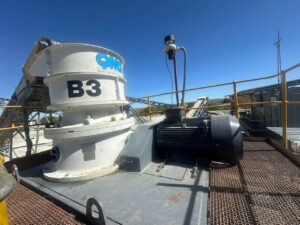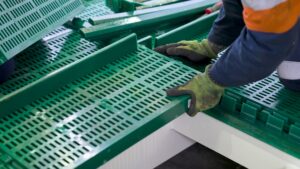In line with Daimler Truck’s global ambition to offer 100% CO₂ neutral trucks and buses by 2050, Daimler Truck Southern Africa (DTSA) has introduced its first fully battery-electric truck range in the South Africa.
The launch event, which took place in Lanseria, Johannesburg, saw the introduction of the Mercedes-Benz eActros 300, comprising a 4×2 and 6×2 rigid, along with a truck tractor variant. Also launched was the eActros 400 6×2 rigid, as well as the eCanter range.
The comprehensive range offers zero emission during operation and focuses on light and heavy-duty distribution applications for now until local vehicle weight and length legislation allows the introduction of long-haul application vehicles. The eActros range is immediately available for sale to customers, with the strong backing of the DTSA team to ensure customer readiness, and effective running of these vehicles in their operations.
In addition, DTSA has announced its ongoing strategic plans for the FUSO eCanter range, which entails the roll-out of extended collaborative trials with its customers. With a portfolio of six units, each unit will be allocated to a customer for a three-month trial period, specifically for in-city distribution.
The objective of the extended trials is for customers to establish performance and infrastructure requirements to successfully run battery electric trucks in their fleet. The FUSO eCanter journey in South Africa commenced in 2020, when the brand became the first OEM to bring a 100% electric truck to South Africa, paving the way for electric truck homologation in the country and establishing a strong foothold for DTSA. The eCanter will be available for sale on operating lease after the completion of customer trials.
“The launch of the eActros and the eCanter in South Africa is a massive feat for us. While we know that to reach our ultimate goal of offering 100% CO₂ neutral products by 2050 will require various zero emission technologies, this launch represents a vital first step for us in building a sustainable future for transportation. We look forward to customer feedback to better support them as we tread new grounds,” says Maretha Gerber, President and Group CEO, DTSA.
“A significant investment from various parties as well as support and collaboration across the industry is required to make battery electric truck operations a viable solution in South Africa, especially when it comes to charging infrastructure. DTSA welcomes initiatives, public or private, that contribute to EV charging for trucks as a catalyst for electric trucks adoption,” adds Gerber.
The eCanter has six HV battery packs with a battery capacity of 83 kWh and a travel range of up to 100 km. The charging time for the eCanter on quick charge is maximum 1 hour 30 minutes on a 50 kW DC charger and 11 hours on regular charging. The eCanter has a single-speed transmission, with a Gross Vehicle Mass of 7,5 t and a body and payload capacity of 4,2 t. The electric motor performance generates 135 kW and 390 Nm torque. The eCanter has a wheelbase of 3 400 mm and overall length of 5 952 mm.
The eActros 300 has three lithium-ion battery packs with a battery capacity of 336 kWh and offers a travel range of up to 330 km. The eActros 300 charges its batteries from 20% to 80% at 160 kW in 1 hour 15 minutes. The gross vehicle mass of the eActros 300 rigid variants ranges from 19 to 27 t, offering body and payloads ranging from 8,2 to 16,1 t. The eActros 300 truck tractor has a gross combination mass of 40 t.
The eActros 400 is equipped with four lithium-ion battery packs with a battery capacity of 4 482 kWh and offers a travel range of up to 400 km. The eActros 400 charges its batteries from 20% to 80% at 160 kW in 1 hour 40 minutes. The eActros 400 has a gross vehicle mass of 27 t, offering a body and payload of up to 15,4 t.
Both the eActros 300 and eActros 400 have a drive unit comprising of a rigid electric axle with two integrated, liquid cooled, electric motors and a two-speed transmission that delivers a continuous output of 330 kW and a peak output of 400 kW.






